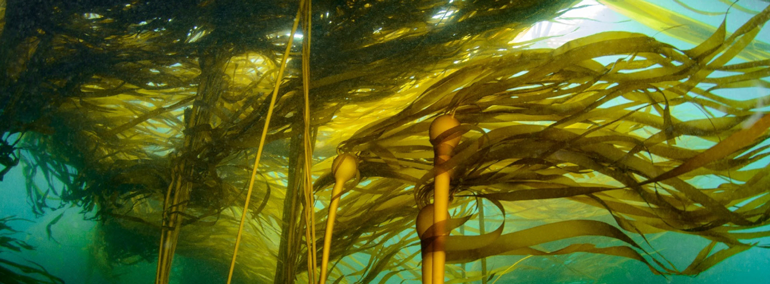
Seaweed Harvesting
Seaweed Conservation
Seaweeds are important components of marine ecosystems and form the foundation of many marine food webs. Fishes, birds, snails, crabs, and marine mammals use kelp beds for refuge, feeding, spawning and nursery grounds.
Kelp beds benefit nearshore areas by trapping sediment. They also disperse wave energy and turbulence to protect shorelines from erosion. Preserving productive kelp beds by sustainable harvest practices assures that seaweed will grow back for future harvests and continue to nourish sea life.
Before you harvest
1. Get a valid license
Get a valid license from Washington Department of Fish & Wildlife (WDFW) offices, online, from dealers, or by phone: 360-902-2464
More harvesting information can be found at: bit.ly/seaweedharvest
2. Check the local area rules and map
Many county and city parks have additional rules. Check with your county’s health department for current closures. All State Park beaches are closed to seaweed harvest except Fort Flagler, Fort Ebey, and Fort Worden. Check tideland ownership. You must obtain permission to harvest from private tidelands.
wdfw.wa.gov/fishing/shellfish/beaches/
wdfw.wa.gov/fishing/shellfish/beaches/
3. Know the limits and use the right tools
- Harvesting for sale or barter is not allowed on public or private land.
- Only a knife, scissors or similar instrument may be used.
- 10 pounds wet weight per day per person. A violation of this daily limit may result in a fine.
- Using rakes or forks to tear plants is prohibited.
- Multiple limits may not be combined in the same container.
- Use your own scale.
- Drying or partial drying prior to weighing is prohibited.

Leave at least 12" above plant base, attach on the beach, untouched and where found.
For more information on sustainable harvesting, contact the Department of Natural Resources Aquatic Resources Division in Olympia at 360-902-1100 or via email at ard@dnr.wa.gov.
4. Make sure seaweed is safe for eating
DO NOT harvest seaweed from restricted beaches. Seaweed contaminated with sewage or naturally occurring bacteria, viruses or toxic chemicals may present health risks. Restricted beaches may include sewage outfall areas, hazardous waste sites, logging facilities, manufacturing facilities and industrial sites. Department of Health identifies restricted or polluted beaches to avoid.
Wash kelp in warm water prior to consuming to remove contaminants.

